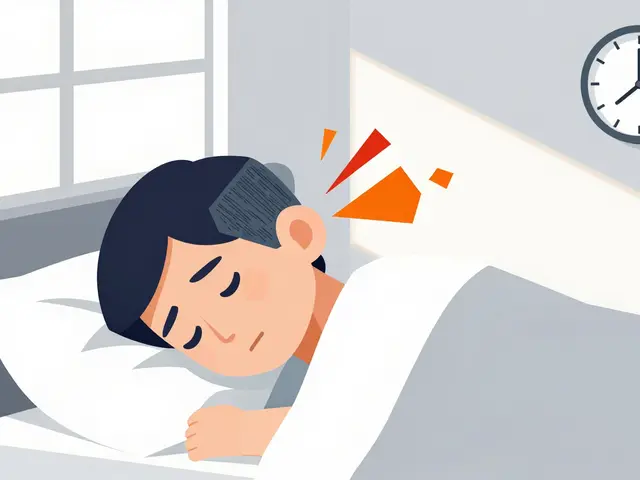Buspirone: Practical Guide for Anxiety and Safe Use
Want relief from chronic anxiety without the fog of benzodiazepines? Buspirone is a common choice for people who need long-term anxiety control. It won’t calm an acute panic attack fast, but it works steadily to reduce baseline worry with a lower risk of dependence.
How buspirone works and dosing
Buspirone acts on serotonin and dopamine receptors in the brain. That sounds technical, but it means buspirone changes the brain signals that fuel persistent worry rather than sedating you. Expect effects to build over 2–4 weeks; some people notice improvement a bit sooner, others take longer.
Typical starting doses are 7.5 mg twice daily or 5–10 mg two or three times a day. Doctors usually increase slowly up to 15–30 mg per day split into two or three doses. The usual maximum is 60 mg per day, divided. Take it with or without food, but keep your routine—the timing matters because buspirone wears off between doses.
Side effects, interactions, and safe buying
Common side effects include dizziness, nausea, headache, and light restlessness. These often fade as your body adjusts. Serious reactions are rare, but watch for signs of serotonin syndrome (high fever, tremors, confusion) if buspirone is combined with other serotonergic drugs.
Key drug interactions: do not combine buspirone with MAO inhibitors. Strong CYP3A4 inhibitors like ketoconazole, erythromycin, or grapefruit juice can raise buspirone levels and cause more side effects. Certain antidepressants and online supplements may interact, so tell your prescriber everything you take.
If you miss a dose, take it when you remember unless it’s close to the next dose—don’t double up. For stopping, work with your clinician; buspirone doesn’t usually cause severe withdrawal like benzodiazepines, but your doctor will advise a sensible taper if needed.
Buying tips: buspirone is prescription-only in most countries. Use a licensed pharmacy—local or reputable online stores that ask for a valid prescription. Red flags include pharmacies that sell controlled meds without prescriptions, extremely low prices, no contact details, or poor reviews. Check pharmacy credentials, verified seals, and clear return/contact policies.
Alternatives include SSRIs, SNRIs, and sometimes short-term benzodiazepines for situational panic. Each option has trade-offs—SSRIs take weeks to work and can cause sexual side effects; benzodiazepines act fast but can lead to dependence. Discuss goals (quick relief vs long-term control) with your clinician.
Bottom line: buspirone is a useful option for persistent generalized anxiety, especially if you want lower sedation and lower addiction risk. Talk openly with your prescriber about other meds, alcohol use, and liver health. That keeps treatment safe and effective.
Buspar, also known by its generic name buspirone, is a unique medication used to manage anxiety. This article dives into what makes Buspar different from other anxiety medicines, what to expect while taking it, and real-life tips for making it work. You'll find practical advice, fascinating facts, and a realistic look at how people, including those like me, fit Buspar into everyday routines. If you're looking for straightforward info about Buspar's uses, side effects, and honest stories, you've landed in the right place.
Continue reading...






